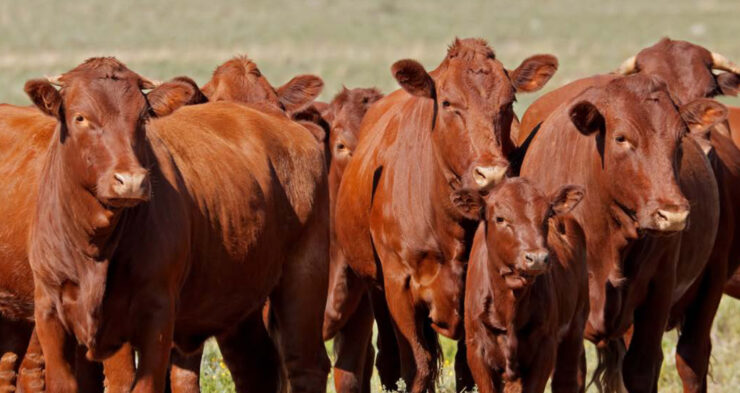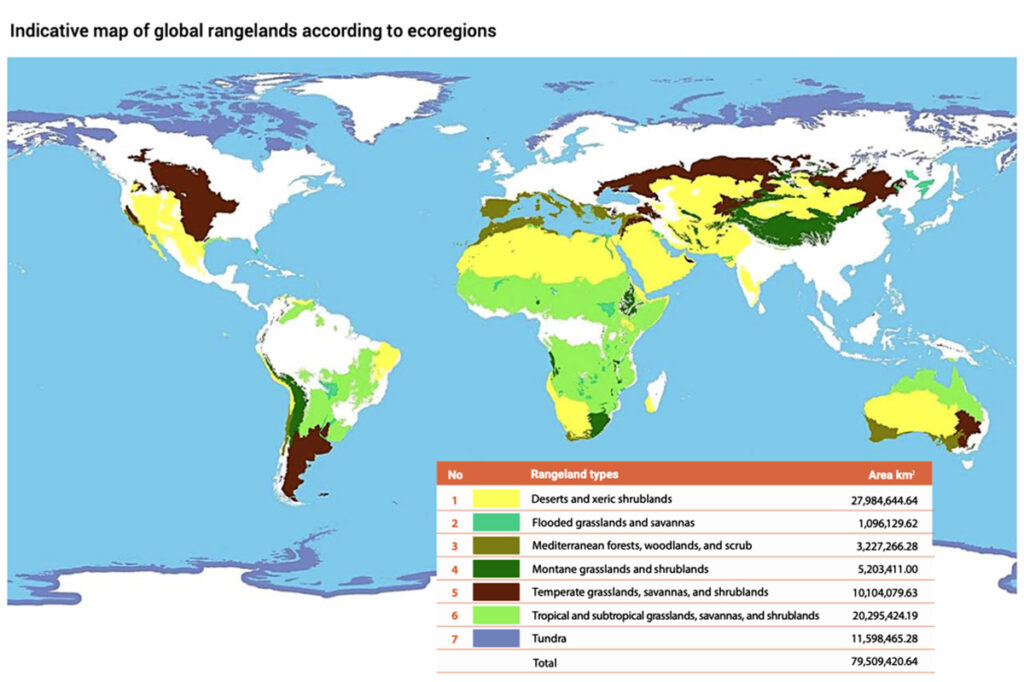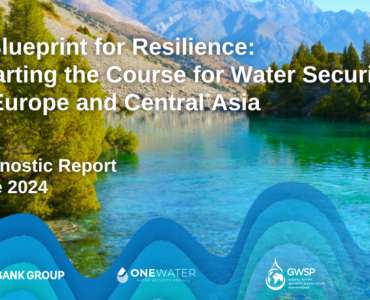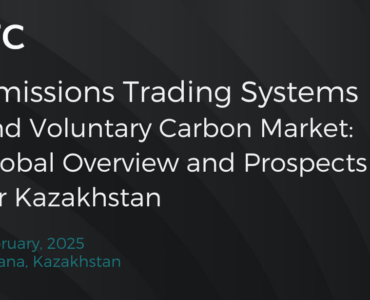A new report by the United Nations Convention to Combat Desertification (UNCCD), titled “Thematic Report on Rangelands and Pastoralists”, highlights the significant issues related to the loss of rangelands and their impact on pastoralist communities worldwide. The report indicates that up to 50% of rangelands globally are degraded. The land degradation manifests as reduced soil fertility, erosion, salinization, and soil compaction. The region of Central Asia and Mongolia, where 60% of the land is used for grazing, is the most affected region in the world. Pastoralism is crucial in the region, supporting the livelihood of about a third of the population and making up 10-45% of national GDP. All Central Asian countries except Turkmenistan have pledged to restore 2.5 million hectares of land and adopted the Astana Resolution to promote regional cooperation.
Rangelands are natural or semi-natural ecosystems that support livestock and wild animals. They are covered with grasses, herbaceous plants, and shrubs. As the largest land type on the planet, they cover over 54% of the land surface and include diverse ecosystems such as drylands, grasslands, and savannahs. They provide value in terms of food and fiber supply, but are also crucial in terms of nutrient and water cycling, carbon sequestration, and other ecosystem services.
Global map of rangelands. Source: The UNCCD report.
Rangeland degradation refers to the decline in rangeland health and its reduced ability to provide ecosystem services. Rangeland degradation is caused by poor land and livestock management, and is exacerbated by climate change and biodiversity loss. It manifests as a loss of vegetation cover, a decline in soil fertility, water scarcity, and biodiversity loss. Land degradation threatens the ecosystems and the communities that depend on them.
Despite the severity of the issue, it attracts little public attention. Many pastoralist and rangeland communities around the world are not represented in the government, and thus have limited influence over policies and programs that could secure their livelihoods. To raise awareness, the UN has designated 2026 as the International Year of Rangelands and Pastoralists.
Donate to support Turkmen analysts, researchers and writers to produce factual, constructive and progressive content in their efforts to educate the public of Turkmenistan.
SUPPORT OUR WORKData on Central Asia and Mongolia (CAM) region
Rangelands cover 60% of the area of Central Asia and Mongolia, and include deserts such as Gobi, Karakum, Kyzylkum, mountain ranges such as Altai, Tien Shan, Pamirs, and many steppes, plains, and temperate grasslands. Pastoralism is crucial in the region, supporting the livelihood of about a third of the population in the region and making up 10-45% of national GDP.
During the Soviet era, collectivization in some Central Asian countries led to increased sedentarization and forced settlement. With the Soviet Union’s dissolution, decollectivization has begun and control of rangeland resources and livestock ownership transferred to private owners. Each country in the region has since adopted their own rangeland management legislation. In Turkmenistan, a Presidential decree in June 1995 and a Land Code in 2004 regulate land use, with pastures managed by state enterprises but often practically unregulated. A 2015 Law on Pastures allows individuals or groups to lease pastures.
Research on land degradation in the region is limited, and its causes are not fully understood. However, decollectivization, expanded irrigation, poor water management, and increased grazing pressures are likely major drivers. Water scarcity, soil erosion, and salinization along with rangeland losses are harming the pastoralist communities.
Central Asia and Mongolia region is one of the hotspot regions and urgently needs sustainable rangeland management and restoration. Kazakhstan, Uzbekistan, and Mongolia have committed to the Land Degradation Neutrality Targets. While Turkmenistan’s commitment is not mentioned in the report, the UNCCD website indicates that the country has voluntarily committed to limiting land degradation. All Central Asian countries except Turkmenistan have pledged to restore 2.5 million hectares of land and adopted the Astana Resolution to promote regional cooperation.
The report outlines several actions that the governments of the region should consider:
- Sustainability:
- Implement regulations aligned with international treaties to support the resilience of rangelands;
- Recognise land rights of rangeland communities and involve them in policy making and restoration of rangelands;
- Promote research, learning, and knowledge creation.
- Environmental:
- Reduce rangeland loss from inappropriate land use;
- Adopt pastoralism-based strategies to address human-induced rangeland degradation;
- Plan and implement nature conservation measures;
- Implement climate change mitigation and adaptation measures.
- Societal:
- Provide training to secure rangeland health and livelihoods of dependent communities;
- Support pastoralist associations, especially for women-led and women-driven groups.
- Economic:
- Offer financial mechanisms to promote sustainable pastoralism and prevent further land degradation;
- Create mechanisms to support livelihoods and income diversification of rangeland communities;
- Adopt drought insurance, community credit schemes;
- Conduct studies to assess the value of rangeland ecosystem services to improve policies and new conservation programs.







